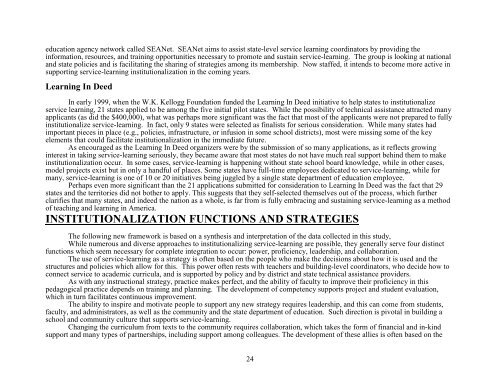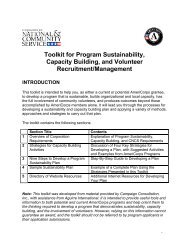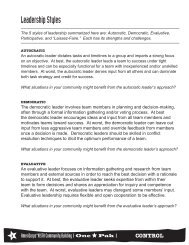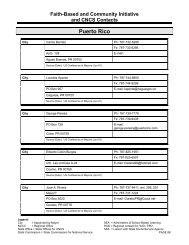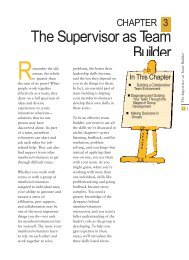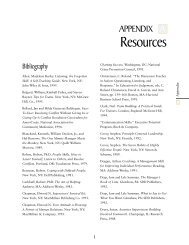MAKE IT LAST FOREVER: THE ... - National Service Resource Center
MAKE IT LAST FOREVER: THE ... - National Service Resource Center
MAKE IT LAST FOREVER: THE ... - National Service Resource Center
You also want an ePaper? Increase the reach of your titles
YUMPU automatically turns print PDFs into web optimized ePapers that Google loves.
education agency network called SEANet. SEANet aims to assist state-level service learning coordinators by providing the<br />
information, resources, and training opportunities necessary to promote and sustain service-learning. The group is looking at national<br />
and state policies and is facilitating the sharing of strategies among its membership. Now staffed, it intends to become more active in<br />
supporting service-learning institutionalization in the coming years.<br />
Learning In Deed<br />
In early 1999, when the W.K. Kellogg Foundation funded the Learning In Deed initiative to help states to institutionalize<br />
service learning, 21 states applied to be among the five initial pilot states. While the possibility of technical assistance attracted many<br />
applicants (as did the $400,000), what was perhaps more significant was the fact that most of the applicants were not prepared to fully<br />
institutionalize service-learning. In fact, only 9 states were selected as finalists for serious consideration. While many states had<br />
important pieces in place (e.g., policies, infrastructure, or infusion in some school districts), most were missing some of the key<br />
elements that could facilitate institutionalization in the immediate future.<br />
As encouraged as the Learning In Deed organizers were by the submission of so many applications, as it reflects growing<br />
interest in taking service-learning seriously, they became aware that most states do not have much real support behind them to make<br />
institutionalization occur. In some cases, service-learning is happening without state school board knowledge, while in other cases,<br />
model projects exist but in only a handful of places. Some states have full-time employees dedicated to service-learning, while for<br />
many, service-learning is one of 10 or 20 initiatives being juggled by a single state department of education employee.<br />
Perhaps even more significant than the 21 applications submitted for consideration to Learning In Deed was the fact that 29<br />
states and the territories did not bother to apply. This suggests that they self-selected themselves out of the process, which further<br />
clarifies that many states, and indeed the nation as a whole, is far from is fully embracing and sustaining service-learning as a method<br />
of teaching and learning in America.<br />
INST<strong>IT</strong>UTIONALIZATION FUNCTIONS AND STRATEGIES<br />
The following new framework is based on a synthesis and interpretation of the data collected in this study,<br />
While numerous and diverse approaches to institutionalizing service-learning are possible, they generally serve four distinct<br />
functions which seem necessary for complete integration to occur: power, proficiency, leadership, and collaboration.<br />
The use of service-learning as a strategy is often based on the people who make the decisions about how it is used and the<br />
structures and policies which allow for this. This power often rests with teachers and building-level coordinators, who decide how to<br />
connect service to academic curricula, and is supported by policy and by district and state technical assistance providers.<br />
As with any instructional strategy, practice makes perfect, and the ability of faculty to improve their proficiency in this<br />
pedagogical practice depends on training and planning. The development of competency supports project and student evaluation,<br />
which in turn facilitates continuous improvement.<br />
The ability to inspire and motivate people to support any new strategy requires leadership, and this can come from students,<br />
faculty, and administrators, as well as the community and the state department of education. Such direction is pivotal in building a<br />
school and community culture that supports service-learning.<br />
Changing the curriculum from texts to the community requires collaboration, which takes the form of financial and in-kind<br />
support and many types of partnerships, including support among colleagues. The development of these allies is often based on the<br />
24


